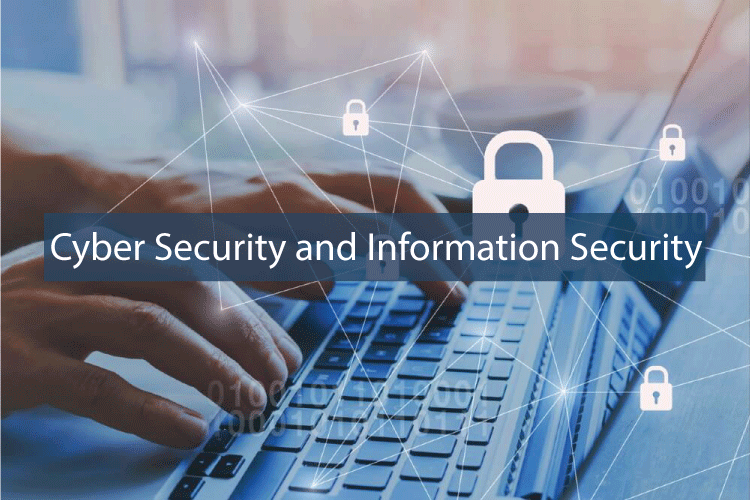Cyber security and Information Security
Although the phrases "cybersecurity" and "information security" are sometimes used interchangeably, they really have different meanings. Both are necessary to safeguard sensitive information and systems, but they concentrate on various facets of security. In this post, we will examine the distinctions between information security and cybersecurity and explain why both are essential for safeguarding digital assets. Cybersecurity: What is it?Cybersecurity is the process of preventing unwanted access, theft, damage, or exploitation of computer systems, networks, and devices. Protecting digital assets from external dangers including viruses, malware, and hacking attempts is the focus of cybersecurity. Cybersecurity experts utilize a range of methods, including as firewalls, antivirus software, intrusion detection systems, and encryption, to safeguard digital assets. They also employ vulnerability scanning and penetration testing to find and fix system flaws before attackers can take advantage of them. Because cyberattacks are getting more frequent and sophisticated, cybersecurity is crucial. It's up to cybersecurity experts to remain ahead of hackers, who are continually coming up with new ways to access networks and steal important data. Information Security: What is it?On the other side, information security is the process of ensuring the availability, confidentiality, and integrity of information. Information security is concerned with safeguarding data in any type, including digital and physical. Data protection, access management, and disaster recovery are only a few of the many subjects covered by information security. Information security experts utilize a range of methods, including as encryption, password rules, and access control systems, to safeguard sensitive data. Information security is crucial since data breaches can result in major negative effects, such as monetary losses, reputational harm, and legal responsibility. A data leak may occasionally even endanger lives. Difference between Information Security and Cyber SecurityCybersecurity and information security are fundamentally different in that the former focuses on safeguarding digital assets from external threats while the latter protects data in any format. Protecting computer systems, networks, and gadgets from unwanted access, theft, damage, or exploitation is the focus of cybersecurity. Whether the information is digital or physical, information security is concerned with preserving its availability, confidentiality, and integrity. Why are both crucial?Information security and cybersecurity are both essential for safeguarding digital assets. Information security defends against internal hazards like human mistake and neglect, whereas cybersecurity defends against external threats like hackers and viruses. Because cyberattacks and data breaches are growing more frequent and sophisticated, cybersecurity and information security are both crucial. To defend digital assets from attackers, cybersecurity experts must remain abreast of the most recent threats and vulnerabilities. Professionals in information security must make sure that sensitive data is secure, whether it is stored digitally or physically. Well, here is a table that compares and contrasts information security with cyber security:
To sum up, essential elements of a thorough security programme include both cybersecurity and information security. These may overlap in certain areas, but they each concentrate on a separate component of security, necessitating the use of unique tools and methods to safeguard digital assets and private information. To create successful security plans and defend themselves against cyber attacks, enterprises must fully comprehend the distinctions between the two.
Next TopicGraphQL Attacks and Security
|
 For Videos Join Our Youtube Channel: Join Now
For Videos Join Our Youtube Channel: Join Now
Feedback
- Send your Feedback to [email protected]
Help Others, Please Share










